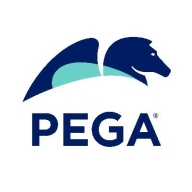

Find out what your peers are saying about Microsoft, OpenText, IBM and others in Enterprise Content Management.
| Product | Market Share (%) |
|---|---|
| OpenText Documentum Content Management | 10.2% |
| SharePoint | 15.0% |
| OpenText Content Management | 10.0% |
| Other | 64.8% |
| Product | Market Share (%) |
|---|---|
| Pega Platform | 5.2% |
| Camunda | 16.0% |
| SAP Signavio Process Manager | 6.5% |
| Other | 72.3% |


| Company Size | Count |
|---|---|
| Small Business | 10 |
| Midsize Enterprise | 1 |
| Large Enterprise | 28 |
| Company Size | Count |
|---|---|
| Small Business | 9 |
| Midsize Enterprise | 15 |
| Large Enterprise | 68 |
OpenText Documentum Content Management provides centralized document management with strong security, advanced metadata management, and seamless integration with systems like SAP and Salesforce, aiding businesses in overseeing content effectively.
OpenText Documentum Content Management is known for its strong integration capabilities, especially with systems such as SAP, Salesforce, and Oracle E-Business Suite, facilitating effective document management. Its strengths include advanced security features, comprehensive metadata management, and robust support for lifecycle and workflow management. The platform's scalability and business process automation capabilities support industries with large volumes of content. It is adaptable for various sectors, including healthcare, banking, insurance, and government, providing document storage, sharing, and collaboration functionalities. While the intuitive automation engine enhances workflows, users have noted that improvements are needed in UI design, performance, and integration with additional systems. Concerns about cloud transition security, high costs, outdated workflows, and complex metadata management indicate areas for development. Supports are sought for AI integrations, improved cloud functionality, and efficient documentation.
What are the key features of OpenText Documentum Content Management?Industries such as healthcare, banking, and government use OpenText Documentum Content Management for document-centric processes, ensuring regulatory compliance and facilitating collaboration. With Captiva enhancing OCR and batch scanning, it is crucial for managing high-quality documentation and compliance efforts across sectors.
Pega Platform provides flexible business process management with a focus on rapid application development and automation through a low-code approach, enhancing efficiency across sectors.
Pega Platform is renowned for its ability to streamline operations with robust automation features, including robotic process automation and decision-making capabilities. Its intuitive interface and workflow management contribute to a reputation for enhancing business processes. Although users face challenges with integration limitations and high licensing costs, they benefit from rapid deployment and efficient process adaptations. The unified architecture reduces complexity, while case management and integration services support digital transformations in sectors such as banking, insurance, and healthcare.
What are the key features of Pega Platform?In industries like insurance, banking, healthcare, and government, Pega Platform is implemented to automate diverse workflows, supporting initiatives from claims processing to customer onboarding. Enterprises use Pega for case management and digital transformations, valuing its out-of-the-box integrations and real-time reporting capabilities to boost operational automation and enhance customer experiences.
We monitor all Enterprise Content Management reviews to prevent fraudulent reviews and keep review quality high. We do not post reviews by company employees or direct competitors. We validate each review for authenticity via cross-reference with LinkedIn, and personal follow-up with the reviewer when necessary.